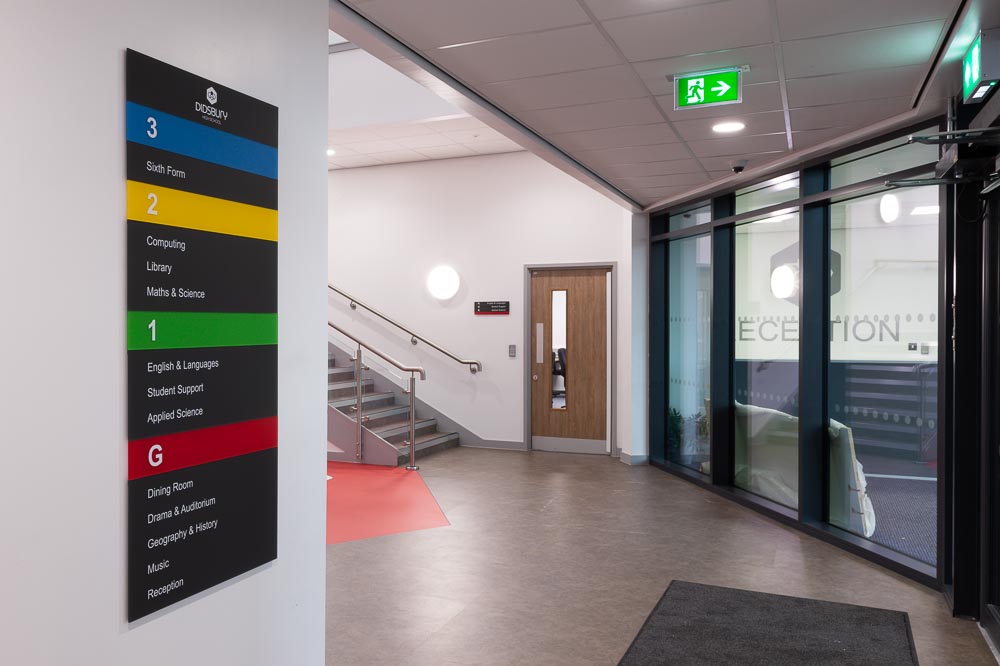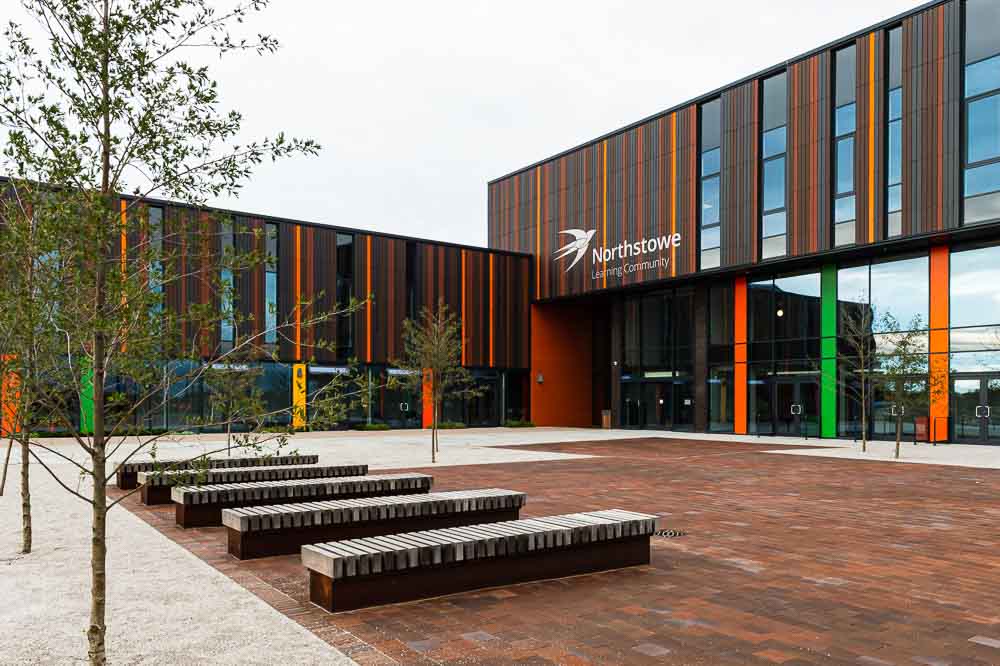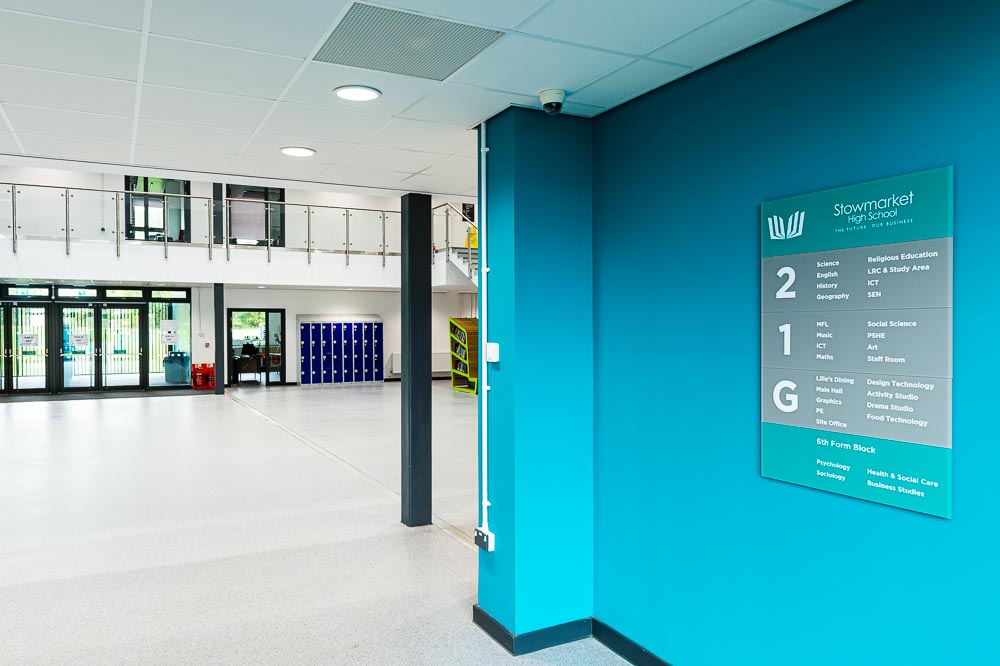Creating a wayfinding scheme in a school presents a fairly unique set of challenges as schools tend to be large, sprawling institutions, with multiple routes that need to be traversed by students, teachers and visitors, some of whom may not have English as their first language. In a school environment, signage should be sufficiently overt so that routes are obvious, even if they are only perceived with a simple glance. School wayfinding is often developed over time as buildings are demolished and added, meaning the wayfinding scheme needs to be fit for purpose both at the point of installation and in the future.
School signage considerations
Schools are also frequently visited by non-students who need to be able to get to the right place in an environment that they are not familiar with. Parents, supply teachers, student teachers, visiting members of local education authorities and representatives from official bodies such as Ofsted will need to be able to find their way around the premises, and that is where effective, uncomplicated signage becomes important.
Schools also offer a great opportunity to test out new signage technology, where new and innovative methods of delivering wayfinding may be very well received, particularly given the more competitive nature that schools tend to have nowadays. That desire for innovation can be a great environment for introducing digital wayfinding schemes in schools, using a combination of screen-based technology and totem installations to create excellent wayfinding options.
The sheer size of some modern schools can be a major barrier to effective signage, but by applying certain design principles, those barriers can be broken down to make the act of getting around much simpler. Many hospitals – also regarded as complex wayfinding schemes – have benefitted from the use of zoning, and colour coordination to ensure that a visitor can navigate their way to the area that they need to be in. With different sections having specifically-coloured signage – and possibly even having it reflected on localised paintwork, a person can identify where they need to be quickly. Once they have arrived at their colour-coded site, more detailed signage can help them find a specific room or area.
School signage products
Further developments in wayfinding signage include the innovative talky™ sign type that allows for pre-recorded audio messages to be delivered at the push of a button. This type of signage aids accessibility and inclusivity in learning environments. Once a visitor has arrived in the right general area that they intend, talky™ signs with information on local geography can be employed to point them in the right direction and enable fast travel to their desired location.
The most utilised school signage products from xsign include the patented Jigsaw, Puzzle and Folio sign types. These products combine to create excellent wayfinding schemes that provide designer and architects with real choice over the material finish and the aesthetics.
Large institutions, such as schools, need effective signage to allow teachers, students and visitors to navigate their environment. New technology and innovation is helping to create world-class learning spaces.



